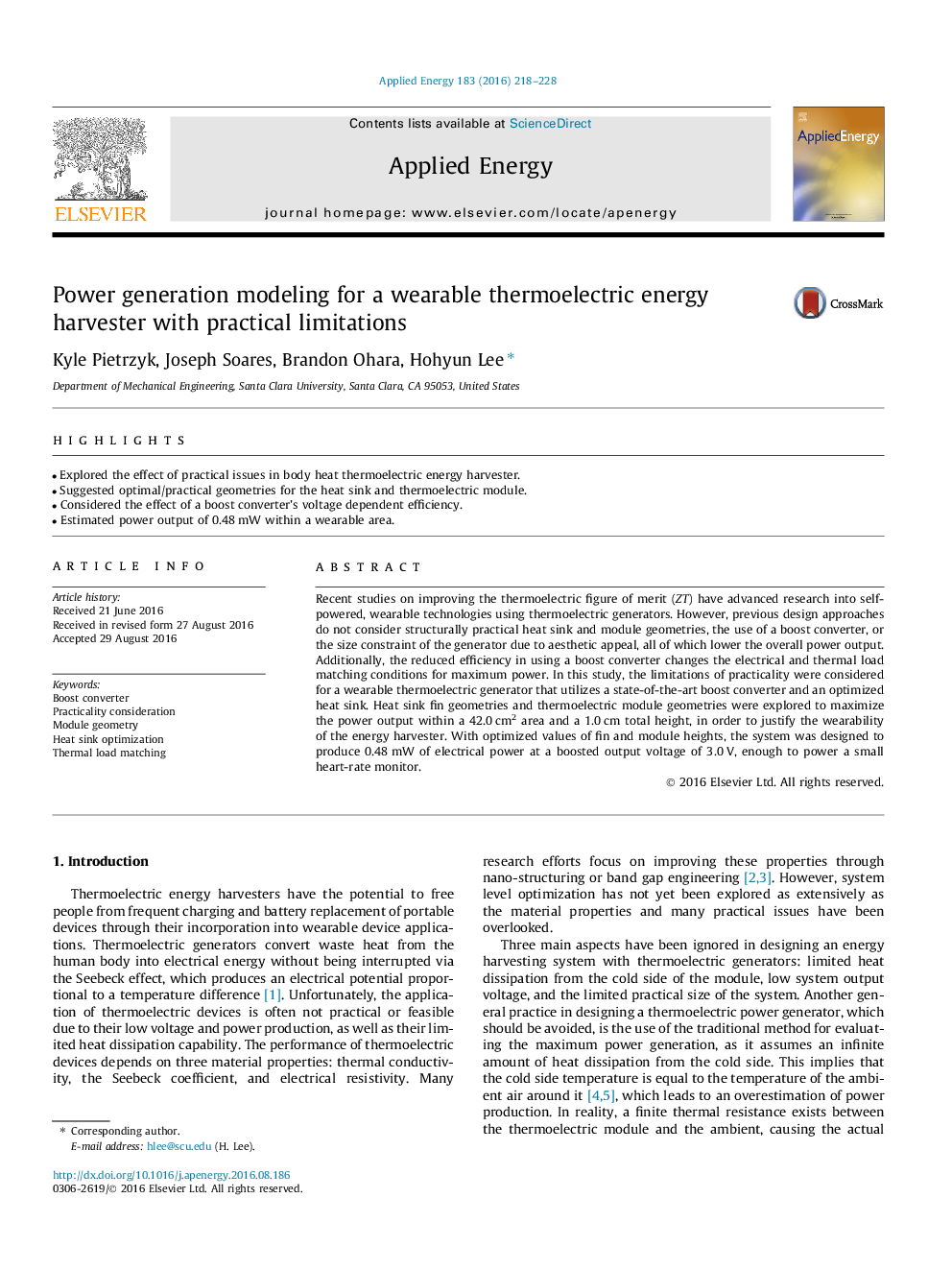| Article ID | Journal | Published Year | Pages | File Type |
|---|---|---|---|---|
| 4916570 | Applied Energy | 2016 | 11 Pages |
Abstract
Recent studies on improving the thermoelectric figure of merit (ZT) have advanced research into self-powered, wearable technologies using thermoelectric generators. However, previous design approaches do not consider structurally practical heat sink and module geometries, the use of a boost converter, or the size constraint of the generator due to aesthetic appeal, all of which lower the overall power output. Additionally, the reduced efficiency in using a boost converter changes the electrical and thermal load matching conditions for maximum power. In this study, the limitations of practicality were considered for a wearable thermoelectric generator that utilizes a state-of-the-art boost converter and an optimized heat sink. Heat sink fin geometries and thermoelectric module geometries were explored to maximize the power output within a 42.0Â cm2 area and a 1.0Â cm total height, in order to justify the wearability of the energy harvester. With optimized values of fin and module heights, the system was designed to produce 0.48Â mW of electrical power at a boosted output voltage of 3.0Â V, enough to power a small heart-rate monitor.
Keywords
Related Topics
Physical Sciences and Engineering
Energy
Energy Engineering and Power Technology
Authors
Kyle Pietrzyk, Joseph Soares, Brandon Ohara, Hohyun Lee,
